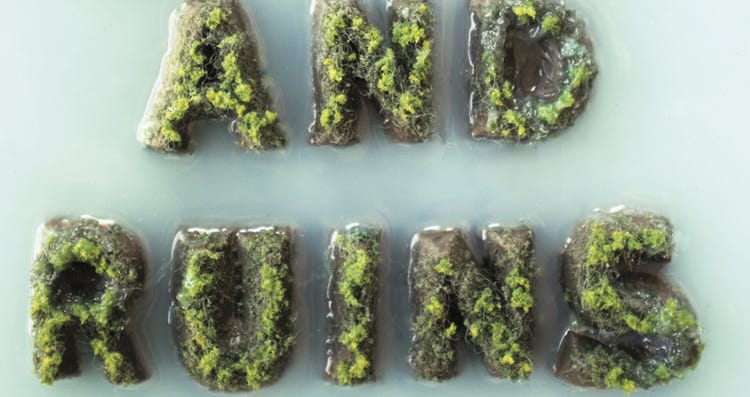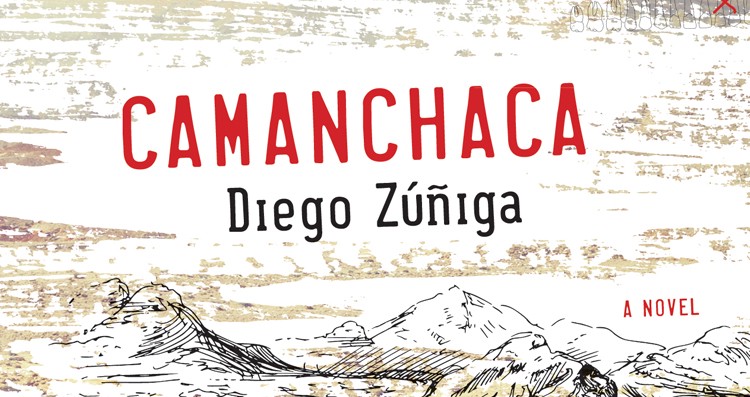Books & Culture
A Modern Novel for the Modern Condition
The succinct and somber prose of Oddný Eir’s autobiographical novel paints an accurate picture of the post Great Recession Icelandic landscape

In succinct and somber prose, Oddný Eir paints the stark landscape of Iceland after the Great Recession in the autobiographical novel, Land of Love and Ruins. As Iceland is reeling after the 2008 financial crash, the narrator traverses the country, looking for artifacts that point to its Viking and Celtic heritage, as well as her own.
Drawing comparisons between the historic pillaging of Iceland by the Vikings with the modern-day Chinese businessmen who are interested in developing countryside, Eir never makes direct connections for readers, instead flitting from modern times to ancient, allowing us to come to our own conclusions and opinions.
The text veers from reading like an eloquent journal to a philosophical debate on the human condition. By discussing history, philosophy, gender relations, archaeology and literature, there is something for everyone interested in examining modernity.
The witty repartee that Eir creates between events, in some ways, takes the place of a straightforward plot. While there are plot points, they act more like signposts than offering momentum.
A conversational tone is further enforced by the book’s form, which is essentially organized as a diary, with each chapter, or entry, titled after an event that holds meaning to the narrator, oftentimes referring to Icelandic folklore or feast days. In the hands of less skilled author, this could be confusing but thanks to Eir’s strong command of language, meaning and import are rarely obfuscated.
As the story progresses, a semblance of plot does develop: the narrator’s struggle to find balance in a love triangle between herself, her brother and her beau. Similar to her quest to discover Iceland’s ancient past in order illuminate the country’s 2008 reality, she examines her life with historic truths, investigating the Romantic poet Williams Wordsworth’s very close relationship with his sister. After traveling through England’s Lake District, the narrator finds a way of balancing an intense familial relationship with her own romantic needs and interests.
In many ways, these two quests — one for Icelandic artifacts, one to balance familial and romantic interests — highlight a tactic Eir employs throughout the novel. While these two plot points seem very different, they both involve a searching for the past and an ability to find truth in the present based on that past. While she is moving physically, darting from Paris to London to Iceland’s hinterlands, the narrator is also moving through vast spaces of time, all in the search for truth and meaning.
This duality reverberates throughout the entire novel. In a way, the technique allows the text to breathe on its own, giving the reader the space to make connections and come to their own conclusions. Given the autobiographical nature of the work, this space is essential and in many ways, makes this a work that in many ways reflects the modern condition: sporadic, intense, empty.
Despite the autobiographical nature of the novel, the narrator remains removed throughout. This fictive distance works well, as we feel invited into Eir’s story, rather than bombarded with it. The only time it feels unwieldy is when Eir shares details about the recent economic crisis and the text begins to sound more journalistic than personal.
As the book progress, it is clear that Eir’s saving grace is her ability to lighten the prose and bring levity to the serious topics. In the midst of discussing important environmental issues, she will ironically point out human’s relationship with nature, saying how it is hard to see nature from the perspective of a “jacked up SUV.”
By lightening the mood and pointing out absurdities of modern life, like tourists buying so-called Icelandic tchotchkes that they will never use, the text moves forward and avoids a polemic tone.
The straightforward tone is also varied with searing descriptions of Iceland, bringing the exotic, rugged landscape to life in such a way that one that the country itself becomes a character in this meandering tale. Drawing on the theme of environmental conservation, Eir weaves in tales of pioneering forbearers, sharing stories of older generations and the harsh realities of life on the stark island. At times, her lyricism about nature borders on magical realism, which mimics the fairy tales that are so often referenced throughout this text. In the same way the tone is emulated by the structure of the work, the natural descriptions mimic the form.

An excellent book for readers interested in seeking out a modern, boundary-pushing work.









